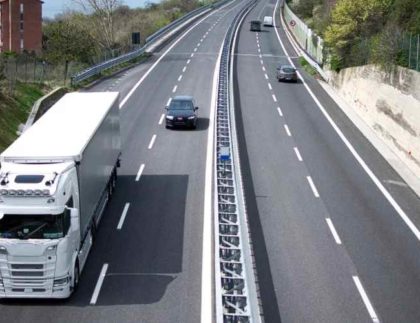

Significant changes to occasional passenger transport will come into force on 22 May. This is the first amendment to the EC Regulation no. 561/2006 since 2020, which was enforced by the mobility package at the time, concerning driving and rest times for drivers performing occasional passenger transport, both domestic and international.
The current changes are the result of the ex-post evaluation of Regulation (EC) no. 561/2006 which concluded that some of the provisions on minimum breaks and rest periods do not fit the specificities of occasional road passenger transport services. Further assessments undertaken by the Commission in that respect have shown that some of the requirements of Regulation (EC) no. 561/2006 on breaks and rest periods are unsuitable and impractical for drivers and carriers engaged in occasional road passenger transport.
The most important changes taking effect
The amendment to the act on driving and rest times for drivers performing occasional passenger transport (both domestic and international) introduces:
- Possible new breakdown of continuous driving breaks. The flexibility of continuous driving breaks has been increased by allowing a 45-minute break to be split into two breaks of at least 15 minutes. Important! The sum of breaks must be at least 45 minutes.
An example of correct use of breaks:

In the example the driver divided the 45-minute break into two breaks, each lasting at least 15 minutes, for a total of 45 minutes.
This division of breaks will not be a violation from 22 May 2024 only for drivers performing occasional passenger transport services.
Other options for splitting the break while driving: 16+29, 30+15, 21+24, 22+23, etc.
- The possibility of extending the day. A driver’s day can be extended by 1 hour (from 24 to 25 hours), either once or twice, allowing more time to work and drive, provided that the following conditions are met:
- The extension of the day must not jeopardize traffic safety or the driver’s working conditions. It must also not cause working time violations.
- It applies only to single occasional passenger transport services.
- On the day the exemption is used, the total driving time shall not exceed seven hours.
- In the case of one-time use of an extension, a single occasional passenger transport service must last for at least six consecutive 24-hour periods.
- If the extension is used twice, a single occasional passenger transport service must last for at least eight consecutive 24-hour periods.
Important! The extension of the day does not apply to the crew for which the day consists of up to 30 hours.
An example of the correct extension of the day:

Such an extension of the 24-hour day will not be a violation from 22 May 2024 only for drivers who perform occasional passenger transport services and meet all the conditions described above.
- The possibility of postponing the next weekly rest period by twelve 24-hour periods also for domestic tours. Until now, the possibility of postponing the weekly rest for 12 consecutive periods applied only to occasional international transport. In order for a driver to use this exemption, they must meet quite a few conditions:
- The exemption applies only to a single occasional passenger transport service.
- The driver must take a weekly regular rest (45 h) before using the exemption.
- After using the exemption, the driver is required to take two regular weekly rests (90 h) or one regular and one shortened rest (69 h) which will be compensated within three consecutive weeks from the end of the exemption.
- A bus must be equipped with a digital tachograph.
- When driving between 10:00 p.m. and 6:00 a.m., the vehicle is driven by a crew or the breaks in continuous driving must be taken every 3 hours of driving, not every 4.5 hours.
- Document requirement. In order to justify the use of the aforementioned exemptions, the driver must have a completed trip form in the vehicle containing the information required under Regulation (EC) no. 1073/2009, which the transport company is responsible for providing to the driver before each trip. Such forms must be kept in the vehicle in paper form or in the form of an electronic copy for at least the previous 28 days and from 31 December 2024 for a minimum period of 56 previous days.
For domestic transportation, you can use the trip form for international transportation, indicating that it is used for domestic transportation.
Digital documents and new information in tachographs
The European Commission has begun work on the possibility of digitizing so-called passenger waybills to replace the paper versions. The works have also begun on modifying tachographs to make them available for recording and storing data on the type of passenger transport, namely regular or occasional passenger transport. When, in the future, a driver uses a tachograph with a function that distinguishes the type of passenger transport, they will not need to keep passenger waybills from previous transports.
Change for all drivers
At the same time as the changes for coach drivers, an amendment was also introduced to Regulation no. 561, which allows inspectors to impose fines for tachograph-related violations (EU Regulation no. 165/2014) for the period of roadside inspections regardless of the country in which the violation was committed. Until now, according to the CJEU ruling, inspection authorities could impose penalties for violations such as those related to the lack of country entry only if the violation occurred on the territory of the country of inspection.
What to remember and what to keep in mind – practical tips
- The changes described above apply only to countries and transports where the revised EC Regulation no. 561/2006 is applicable. In the case of trips made under the AETR agreement, the aforementioned changes are not taken into account and the use of, for example, a new method of splitting the break in continuous driving may be treated as a violation. Important! Transporting passengers to the UK falls under the AETR agreement.
- Currently no tachographs distinguish between occasional and regular passenger transport, nor do they have any analysis algorithms conforming to the new regulations, therefore the indications regarding e.g. the remaining continuous driving time or daily rest for drivers carrying out transports in accordance with them can be incorrect and misleading.
- The amendments to EC Regulation no. 561/2006 will be implemented very soon quickly, within 20 days of their publication in the Official Journal. We are already working on changes to the 4Trans and TachoscanControl software in order to deliver functionalities to make the analysis compliant with the aforementioned changes as soon as possible.
Source: Regulation (EU) no. 2024/1258, which introduces the aforementioned changes to EC Regulation 561/2006, in English: https://eur-lex.europa.eu/legal-content/EN/TXT/PDF/?uri=OJ:L_202401258










